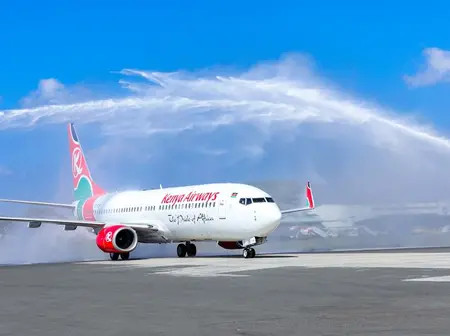Flying may look glamorous from the outside, but behind the clouds, aviation is one of the toughest industries to crack.
From billion-shilling aircraft that barely make a dollar per passenger to the 100+ people needed to turn around a single flight, the realities of running an airline are anything but simple. Yet, there’s also room for humor.
In this piece, Leonard Khafafa unpacks ten aviation truths that cut through the myths, all served with a Kenyan twist of comic relief. Whether you’re a curious traveler, a budding entrepreneur, or just someone who once mistook speed tape for duct tape, here are ten aviation truths that blend hard facts with a dose of comic relief.
Buying a Plane ≠ Starting an Airline
So, you bought an aircraft? Cute. Without an Air Operator Certificate (AOC), it’s just an expensive toy. Getting an AOC from the Kenya Civil Aviation Authority is no joke—it can take months or even years. For context? Getting a PSV license is like clicking “Apply” and printing your receipt.
It Takes a Village to Fly a Plane
Running a matatu? You need a driver, maybe a conductor. Flying a plane? You’ll need over 100 people—from check-in staff and security to cockpit and cabin crew. Aviation is a full-team sport.
Aircraft Are Expensive—and So Are the Salaries
A Boeing 787 carrying 234 passengers needs a staff of 100+ for each turnaround. That’s 1 employee per 3 passengers. Compare that to Kenyan banks—1 employee serves 1,733 customers. Aviation may be glamorous, but it’s also a high-cost, low-margin game.
No, That’s Not Duct Tape on the Wing
Seen tape on a plane and panicked? Relax—it’s not holding the aircraft together. It’s aerospace-grade speed tape, designed for temporary cosmetic fixes. If it were serious, that plane wouldn’t be in the sky.
No Graffiti, Please—This Isn’t a Matatu
While matatus proudly display murals and slogans, aircraft are usually plain white—for good reason. White paint reflects sunlight, reduces heat stress, and helps spot cracks or leaks. Also, painting a plane costs as much as a small wedding. In Karen.
Want High Returns? Buy a Bus, Not a Jet
According to IATA’s 2025 projections, African airlines average just $1 profit per passenger. Yes, one dollar. Enough for a mint.
Most airlines exist more for national pride and strategic reasons than profit. So if you’re in it for the money, consider investing in a Mbukinya Bus instead.
In Aviation, Bigger is Better
Small numbers are great for waistlines—not for airlines. Larger fleets benefit from economies of scale. If buying more aircraft isn’t an option, alliances and partnerships (like KLM-Air France or the Pan-African Airline Group led by Kenya Airways) are the next best bet.
When Planes Stop, the Banks Don’t
The airline industry is hypersensitive to shocks—from global pandemics to policy changes. When COVID-19 hit, flights stopped. But banks? They kept counting. Revenue dried up. Debt didn’t.
Delays Are the Norm, Not the Exception
Fog, sudden storms, VVIP movements, staff strikes—you name it. Operational hiccups are part of the aviation experience. And regardless of the cause, the airline gets the blame. Every. Single. Time.
A Thick Skin is Required—Preferably with a Helmet and Humour
In aviation, wins are rare, and applause even rarer. Success is downplayed, while failures are magnified. Still, something is rewarding about moving people and goods across borders—fueling economies, creating jobs, and connecting continents.
Oh, and yes—the salary helps cushion the turbulence.

Leave a Reply